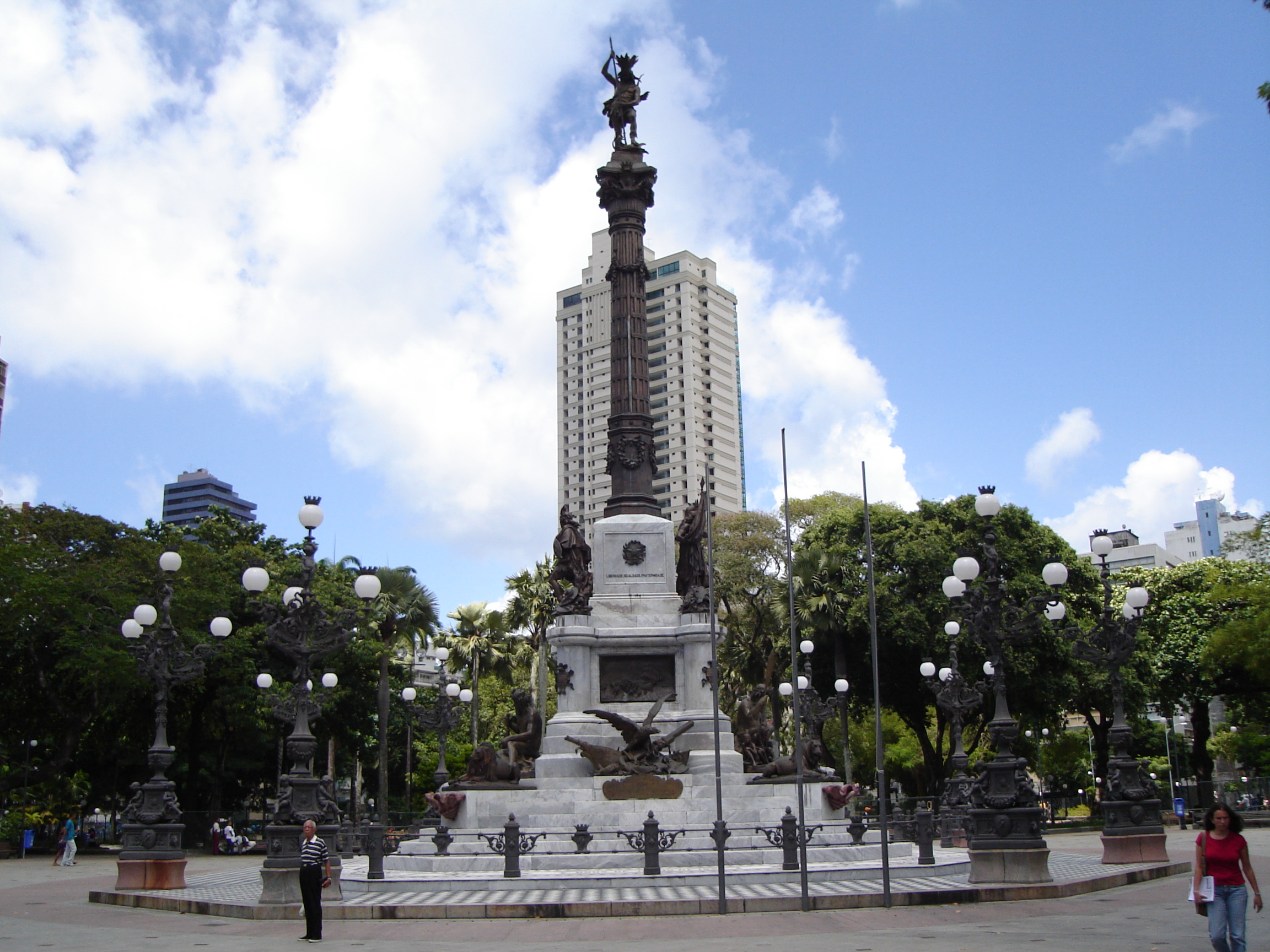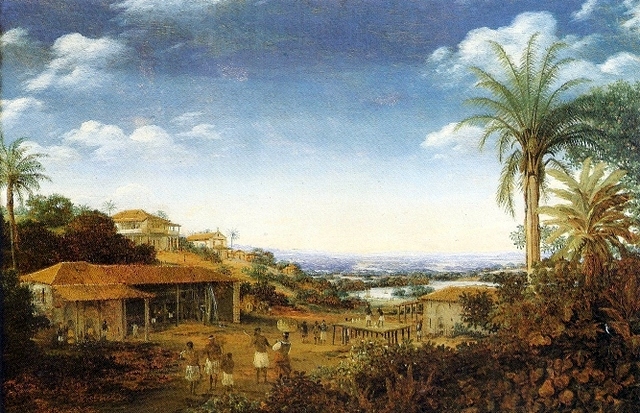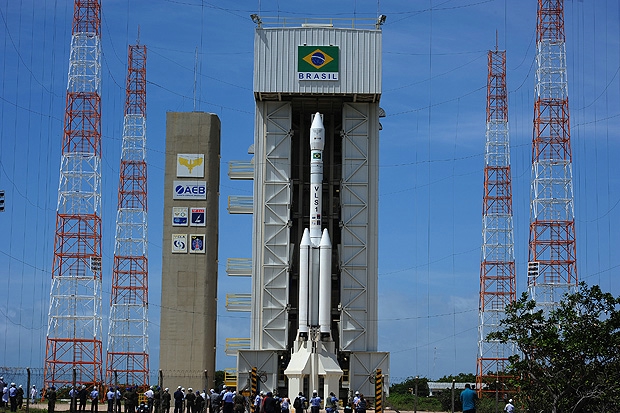|
Mata De São João
Mata de São João is a municipality in the state of Bahia in the North-East region of Brazil. It covers and a population of 47,126 (2020 est.). Mata de São João has a population density of 73 inhabitants per square kilometer. It is located from the state capital of Bahia, Salvador. History Mata de São João was settled by the Portuguese in 1549 with the arrival of Tomé de Souza in Brazil. De Souza appointed his son Garcia de Sousa d'Ávila (1528-1609) to build a fortress on the Bahia coast. De Sousa d'Ávila built the Garcia d'Ávila Tower House and Chapel of Our Lady of the Conception complex, which consisted of a fort, a castle, and a church. The castle is a unique example of medieval architectural in the Americas. The site is now in ruins. De Sousa d'Ávila also became one of the largest land owners in the Americas; its holdings extended from Bahia to present-day Maranhão in the north. The Casa da Torre established numerous sugarcane plantations in the Bahia region ... [...More Info...] [...Related Items...] OR: [Wikipedia] [Google] [Baidu] |
List Of Municipalities In Bahia
This is a list of the municipalities in the state of Bahia (BA), located in the Northeast Region of Brazil. Bahia is divided into 417 municipalities, which were, until 2017, grouped into 32 microregions, which were grouped into 7 mesoregions. See also * Geography of Brazil * List of cities in Brazil {{South America topic, List of cities in Bahia Bahia () is one of the 26 Federative units of Brazil, states of Brazil, located in the Northeast Region, Brazil, Northeast Region of the country. It is the fourth-largest Brazilian state by population (after São Paulo (state), São Paulo, Mina ... * ... [...More Info...] [...Related Items...] OR: [Wikipedia] [Google] [Baidu] |
Salvador, Bahia
Salvador () is a Municipalities of Brazil, Brazilian municipality and capital city of the Federative units of Brazil, state of Bahia. Situated in the Zona da Mata in the Northeast Region, Brazil, Northeast Region of Brazil, Salvador is recognized throughout the country and internationally for its #Cuisine, cuisine, #Music, music, and #Pelourinho, architecture. The African influence in many cultural aspects of the city makes it a center of Afro-Brazilian culture. As the Capitals of Brazil, first capital of Colonial Brazil, the city is List of oldest continuously inhabited cities, one of the oldest in the Americas. Its foundation in 1549 by Tomé de Sousa took place on account of the implementation of the List of governors-general of Brazil, General Government of Brazil by the Portuguese Empire. Centralization as a capital, along with Portuguese colonization, were important factors in shaping the profile of the municipality, as were certain geographic characteristics. The construct ... [...More Info...] [...Related Items...] OR: [Wikipedia] [Google] [Baidu] |
Populated Coastal Places In Bahia
Population is a set of humans or other organisms in a given region or area. Governments conduct a census to quantify the resident population size within a given jurisdiction. The term is also applied to non-human animals, microorganisms, and plants, and has specific uses within such fields as ecology and genetics. Etymology The word ''population'' is derived from the Late Latin ''populatio'' (a people, a multitude), which itself is derived from the Latin word ''populus'' (a people). Use of the term Social sciences In sociology and population geography, population refers to a group of human beings with some predefined feature in common, such as location, race, ethnicity, nationality, or religion. Ecology In ecology, a population is a group of organisms of the same species which inhabit the same geographical area and are capable of interbreeding. The area of a sexual population is the area where interbreeding is possible between any opposite-sex pair within the are ... [...More Info...] [...Related Items...] OR: [Wikipedia] [Google] [Baidu] |
Sauipe
Sauipe is a district in the municipality of Mata de São João, on the northern coast of the state of Bahia, in Brazil. There are few permanent residents there, due to the very high cost of residences and the fact that almost the entire area is filled with hotels and resorts, which form the largest tourist complex in Brazil. Toponym The name of district is a refer to a local namesake river. "Sauipe" comming tupi term ''saûí'ype'', that means "on saguis river's" (''saûí'', sagui + y'', river + ''pe'', on). Costa do Sauipe Sauipe is recognized for the complex Costa do Sauipe, which is a major tourist hotel development consisting of five resorts and five inns. It extends over 176 hectares and is 76 kilometers from Salvador Airport. At the moment is managing by Rio Quente Resorts Group. Due to its size, it has already received events such as the Brasil Open of Tennis from 2001 to 2011, the 2001 Beach Soccer World Championship, the XXXVI Ordinary Meeting of the Mercosur ... [...More Info...] [...Related Items...] OR: [Wikipedia] [Google] [Baidu] |
2014 FIFA World Cup
The 2014 FIFA World Cup was the 20th FIFA World Cup, the quadrennial world championship for list of men's national association football teams, men's national Association football, football teams organised by FIFA. It took place in Brazil from 12 June to 13 July 2014, after the country was awarded the hosting rights in 2007. It was the second time that Brazil staged the competition, the first being in 1950 FIFA World Cup, 1950, and the fifth time that it was held in South America. 31 national teams advanced through 2014 FIFA World Cup qualification, qualification competitions to join the host nation in the final tournament (with Bosnia and Herzegovina national football team, Bosnia and Herzegovina as the only debutant). A total of 64 matches were played in 12 venues located in as many host cities across Brazil. For the first time at a World Cup finals, match officials used goal-line technology, as well as vanishing spray for Direct free kick, free kicks. FIFA Fan Fests in eac ... [...More Info...] [...Related Items...] OR: [Wikipedia] [Google] [Baidu] |
Croatia National Football Team
The Croatia national football team () represents Croatia in men's international Association football, football matches. It is governed by the Croatian Football Federation (HNS), the governing body for football in Croatia. It is a member of UEFA in Europe and FIFA in global competitions. The team's colours reference two national symbols: the Croatian checkerboard and the Flag of Croatia, country's tricolour. They are colloquially known as the (Blazers) and (Checkered Ones). Since 2000, the have qualified for every major tournament except UEFA Euro 2000 and the 2010 FIFA World Cup. At the FIFA World Cup, World Cup, Croatia has finished second once (2018 FIFA World Cup, 2018) and third on two occasions (1998 FIFA World Cup, 1998, 2022 FIFA World Cup, 2022), securing three World Cup medals. Davor Šuker won the FIFA World Cup awards, Golden Shoe and the FIFA World Cup awards, Silver Ball in 1998, while Luka Modrić won the FIFA World Cup awards, Golden Ball in 2018 and the FIFA ... [...More Info...] [...Related Items...] OR: [Wikipedia] [Google] [Baidu] |
Portuguese Inquisition
The Portuguese Inquisition (Portuguese language, Portuguese: ''Inquisição Portuguesa''), officially known as the General Council of the Holy Office of the Inquisition in Portugal, was formally established in Kingdom of Portugal, Portugal in 1536 at a long-standing request of King John III of Portugal, John III. It was one of three different manifestations of the wider Christian Inquisition, along with the Spanish Inquisition and Roman Inquisition, that survived in the period after the Medieval Inquisition. The Goa Inquisition was an extension of the Portuguese Inquisition in colonial-era Portuguese India. The Portuguese Inquisition was terminated in 1821. History Background In 1478, Pope Sixtus IV issued the papal bull ''Exigit sincerae devotionis affectus'' that allowed the installation of the Inquisition in Castile, which created a strong wave of immigration of Jews and heretics to Portugal. After these events, the situation of the Jews and Moors in Portugal worsened. Befo ... [...More Info...] [...Related Items...] OR: [Wikipedia] [Google] [Baidu] |
Slavery In Brazil
Slavery in Brazil began long before the Colonial Brazil, first Portuguese settlement. Later, colonists were heavily dependent on indigenous labor during the initial phases of settlement to maintain the subsistence economy, and natives were often captured by expeditions of bandeirantes (derived from the word for "flags", from the flag of Portugal they carried in a symbolic claiming of new lands for the country). The importation of African slaves began midway through the 16th century, but the enslavement of indigenous peoples continued well into the 17th and 18th centuries. Europeans and Chinese were also enslaved. During the Atlantic slave trade era, Brazil imported more enslaved Africans than any other country in the world. Brazil's foundation was built on the exploitation and enslavement of indigenous peoples and Africans. Out of the 12 million Africans who were forcibly brought to the New World, approximately 5.5 million were brought to Brazil between 1540 and the 1860s. Th ... [...More Info...] [...Related Items...] OR: [Wikipedia] [Google] [Baidu] |
Sergipe
Sergipe (), officially State of Sergipe, is a States of Brazil, state of Brazil. Located in the Northeast Region, Brazil, Northeast Region along the Atlantic Ocean, Atlantic coast of the country, Sergipe is the smallest state in Brazil by geographical area at , larger only than the Federal District (Brazil), Federal District. Sergipe borders Bahia to the south and west and Alagoas to the north. Aracaju is the capital and the largest city in the state; the state is divided into 75 Municipalities of Brazil, municipalities. The state has 1.1% of the Brazilian population and produces only 0.6% of the Brazilian GDP. Geography As with most of the states in northeastern Brazil, inland Sergipe is almost entirely savanna (''caatinga''), and its coastline is characterized by mangroves, swamps and sandy beaches. A small strip of tropical rainforest runs down the coast. The São Francisco River forms its northern boundary, and the drainage of the northern part of the state is northward and ... [...More Info...] [...Related Items...] OR: [Wikipedia] [Google] [Baidu] |
Maranhão
Maranhão () is a States of Brazil, state in Brazil. Located in the country's Northeast Region, Brazil, Northeast Region, it has a population of about 7 million and an area of and it is divided into 217 municipalities. Clockwise from north, it borders on the Atlantic Ocean for 2,243 km and the states of Piauí, Tocantins and Pará. The people of Maranhão have a distinctive accent within the common Northeastern Brazilian dialect. Maranhão is described in literary works such as ''Canção do exílio, Exile Song'' by Gonçalves Dias and ''Casa de Pensão'' by Aluísio Azevedo. The dunes of Lençóis Maranhenses National Park, Lençóis are an important area of environmental preservation. Also of interest is the state capital of São Luís, Maranhão, São Luís, which is a UNESCO World Heritage Site. Another important conservation area is the Parnaíba River delta, between the states of Maranhão and Piauí, with its lagoons, desert dunes and deserted beaches or islands, suc ... [...More Info...] [...Related Items...] OR: [Wikipedia] [Google] [Baidu] |
Garcia D'Ávila Tower House
The Tower House of Garcia d'Avila (), also known as the Castelo de Garcia d'Ávila, Forte de Garcia d'Ávila, is a 17th-century building complex in Mata de São João, Bahia, Brazil. It was constructed in the present-day settlement of Praia do Forte, from a small natural harbor on the Atlantic coast. Tomé de Sousa (1503-1579), the first governor-general of Brazil, appointed his son Garcia de Sousa d'Ávila (1528-1609) to build a fortress on the Bahia coast. The castle sits on a hill with a good view of the Atlantic Ocean; the castle, as well as the village of Tatuapara, served as an advanced point of vigilance for Salvador and settlements around the Bay of All Saints. Alerts of the approach of enemy ships were sent from the castle to Salvador via encrypted messages of smoke and torches; they traveled from the castle through a chain of Society of Jesus, Jesuit villages and other small settlements until they reached Salvador. Garcia built a complex that included a fortified watchto ... [...More Info...] [...Related Items...] OR: [Wikipedia] [Google] [Baidu] |
Brazil
Brazil, officially the Federative Republic of Brazil, is the largest country in South America. It is the world's List of countries and dependencies by area, fifth-largest country by area and the List of countries and dependencies by population, seventh-largest by population, with over 212 million people. The country is a federation composed of 26 Federative units of Brazil, states and a Federal District (Brazil), Federal District, which hosts the capital, Brasília. List of cities in Brazil by population, Its most populous city is São Paulo, followed by Rio de Janeiro. Brazil has the most Portuguese-speaking countries, Portuguese speakers in the world and is the only country in the Americas where Portuguese language, Portuguese is an Portuguese-speaking world, official language. Bounded by the Atlantic Ocean on the east, Brazil has a Coastline of Brazil, coastline of . Covering roughly half of South America's land area, it Borders of Brazil, borders all other countries and ter ... [...More Info...] [...Related Items...] OR: [Wikipedia] [Google] [Baidu] |







